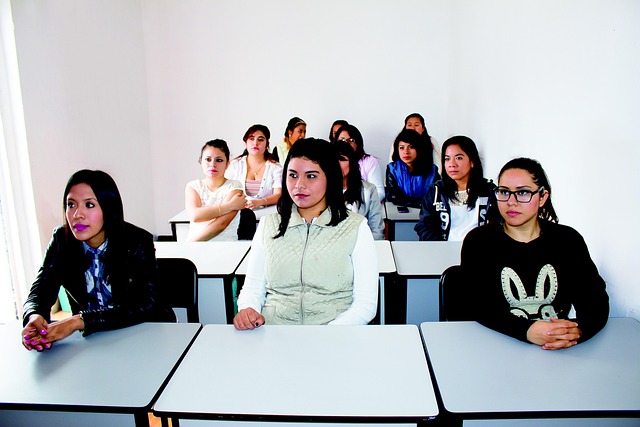Off-campus student housing poses unique safety risks like poorly maintained properties and inadequate security. Students should research landlords and properties diligently to address these challenges. Shared responsibility between landlords and tenants is crucial for implementing robust security measures like smoke detectors and secure locks, regular maintenance, clear communication, and emergency protocols. Simple habits, security devices, and community engagement further enhance personal safety. Peer-led programs, workshops, and check-ins promote awareness and a collaborative environment for safer student housing.
In the vibrant landscape of off-campus student housing, ensuring safety is paramount. As students navigate their new environments, understanding inherent risks and implementing robust safety measures is essential. This article delves into critical aspects of student rental security, from identifying potential hazards to fostering a culture of awareness. We explore practical steps like emergency preparedness, secure living spaces, and peer-driven safety initiatives, offering a comprehensive guide to enhance the overall well-being of students in their temporary homes.
- Understanding Off-Campus Student Housing Risks
- Essential Safety Measures for Student Rentals
- Creating a Secure Environment in Dorms
- Emergency Preparedness in Student Communities
- Promoting Safety Awareness Among Peers
Understanding Off-Campus Student Housing Risks

Off-campus student housing presents unique challenges and risks that are distinct from on-site university accommodations. Students living away from campus often face increased exposure to potentially hazardous situations, such as poorly maintained properties, inadequate security measures, and unfamiliar surroundings. Understanding these inherent risks is a critical first step for students to take in ensuring their safety.
One of the primary concerns is the general lack of oversight and regulation in off-campus student housing. Unlike dormitories, these rental properties are not subject to the same level of inspection and safety standards. As a result, some landlords may cut corners on essential repairs, fire safety, or security systems, leaving tenants vulnerable to accidents, injuries, or even worse. Students should therefore conduct thorough research on potential landlords and properties before signing any agreements.
Essential Safety Measures for Student Rentals

When it comes to student rentals off campus, ensuring safety is paramount. Landlords and tenants alike must prioritize certain essential measures to foster a secure living environment. Starting with robust security systems like smoke detectors, carbon monoxide alarms, and deadbolt locks goes a long way in preventing accidents and deterring potential intruders. Regular maintenance checks are crucial to keep these systems functional.
Additionally, clear communication channels between landlords and tenants are vital for quick response during emergencies. Establishing an open dialogue about safety protocols, emergency contact numbers, and evacuation plans can save lives. Tenants should also be encouraged to report any maintenance issues or suspicious activities promptly. Regular safety workshops or information sessions can educate students on these matters, promoting a proactive approach to their well-being in off-campus housing.
Creating a Secure Environment in Dorms

Creating a secure environment is paramount in student housing safety, especially off-campus dorms. Students can take proactive measures to enhance their personal safety by adopting simple yet effective habits. For instance, ensuring doors and windows are securely locked at all times prevents unauthorized access. Additionally, installing security devices like alarms or cameras acts as a deterrent for potential intruders, offering peace of mind.
Regular maintenance checks by residence hall staff can significantly contribute to student housing safety. This includes prompt reporting and resolution of any maintenance issues, such as broken locks or faulty alarms, ensuring the overall integrity of the living space. Moreover, promoting a culture of awareness among residents—keeping an eye out for suspicious activities and communicating openly with neighbors—can create a collective sense of security in off-campus dorms.
Emergency Preparedness in Student Communities

In the dynamic environment of student housing, off-campus rentals present unique challenges when it comes to student housing safety. Emergency preparedness is a cornerstone of ensuring a secure living space for students. It’s crucial to have well-defined protocols in place that every resident understands. This includes clear evacuation plans, emergency contact lists, and regular drills to familiarize everyone with the proper responses during unforeseen events such as fires, natural disasters, or security breaches.
Community engagement is vital here. Landlords and property managers should foster an atmosphere where students actively participate in safety discussions and training. Encouraging open communication about student housing safety concerns can help identify potential hazards early on. Additionally, integrating accessible emergency alarms, working smoke detectors, and well-lit common areas enhances the overall security of off-campus student communities, instilling peace of mind for both residents and parents alike.
Promoting Safety Awareness Among Peers

Promoting safety awareness among peers is a key strategy in enhancing student housing safety. Students can foster a culture of vigilance by organizing informational sessions, workshops, or peer support groups to discuss potential risks and prevention methods. These initiatives empower students to identify hazardous situations, such as fire hazards, unsafe maintenance, or suspicious activities, and take collective action.
Peer-led safety programs encourage open communication and collaboration, ensuring that everyone in the student housing community is attuned to their surroundings. By sharing knowledge and experiences, students can collectively contribute to a safer environment. Regular check-ins and peer mentoring also help identify vulnerable individuals who may require additional support or resources for personal safety.
